Complete Solutions to Ordinary Thinking Objective Questions (Electric Flux and Gauss.s Law) of chapter ELECTROSTATICS of Class 12 book with complete answers and questions
| Class 12 | PHYSICS |
| Chapter | ELECTROSTATICS |
| ERRORLESS | Ordinary Thinking Objective Questions (Electric Flux and Gauss.s Law) |
| Number Of Questions | 28 |
| Academic Year | 2023-24 |
A cylinder of radius R and length L is placed in a uniform electric field E parallel to the axis. The total flux for the surface of the cylinder is given by
02:13View SolutionElectric field at a point varies as `r^(0)` for
01:19View SolutionAn electric charge q is placed at the centre of a cube of side l. The electric flux through one of its faces will be
02:01View SolutionTotal electric flux coming out of a unit positive charge put in air is
01:54View SolutionFor a given surface the Gauss's law is stated as`oint vecE.dvecA=0`. From this we can conclude that
03:01View SolutionA cube of side l is p laced in a uniform field E, where `E=E hati`. The net electric flux through the cube is
05:02View SolutionEight dipoles of charges of magnitude e are placed inside a cube. The total electric flux coming out of the cube will be
02:01View SolutionA charge +q is placed at the mid point of a cube of side L. The electric flux emerging from cube is
03:05View SolutionA charge q is placed at the centre of the open end of a cylindrical vessel . The flux of the electric field through the surface of the vessel is
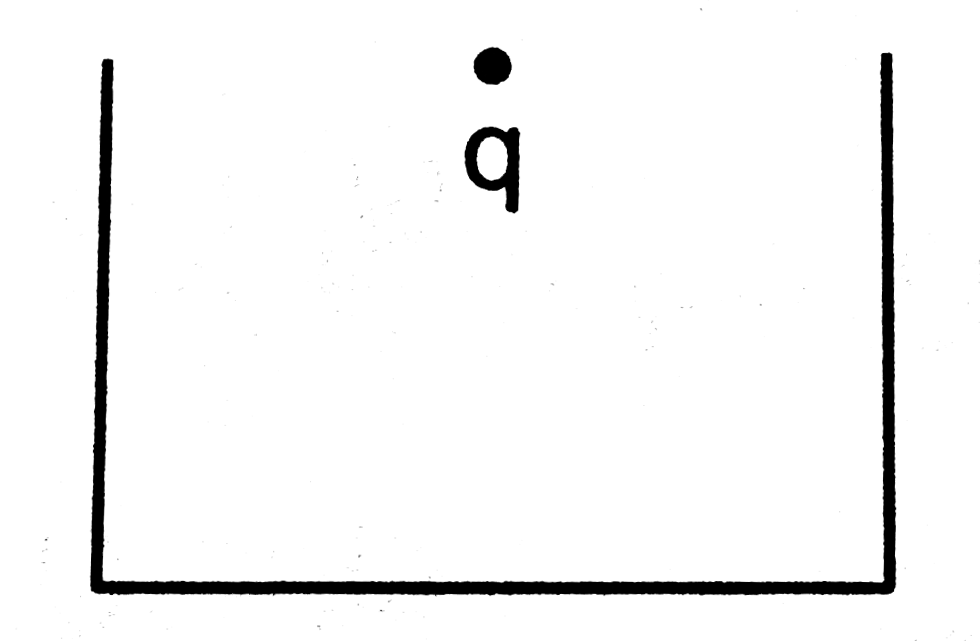 03:06View Solution
03:06View SolutionIt is not convenient to use a spherical Gaussian surface to find the electric field due to an electric dipole using Gauss’s theorem because
03:28View SolutionIn case of infinite long wire electric field is proportional to
02:20View SolutionElectric charge is uniformly distributed along a long straight wire of radius 1 mm. The charge per cm length of the wire Q coulomb. Another cylindrical surface of radius 50 cm and length 1 m symmetrical encloses the wire as shown in the figure. The total electric flux passing through the cylindrical surface is
03:24View SolutionThe SI unit of electric flux is
01:53View Solution`q_(1),q_(2),q_(3)` and `q_(4)` are point charges located at point as shown in the figure and `s` is a spherical Gaussian surface of radius `R`. Which of the following is true according to the Gauss's law
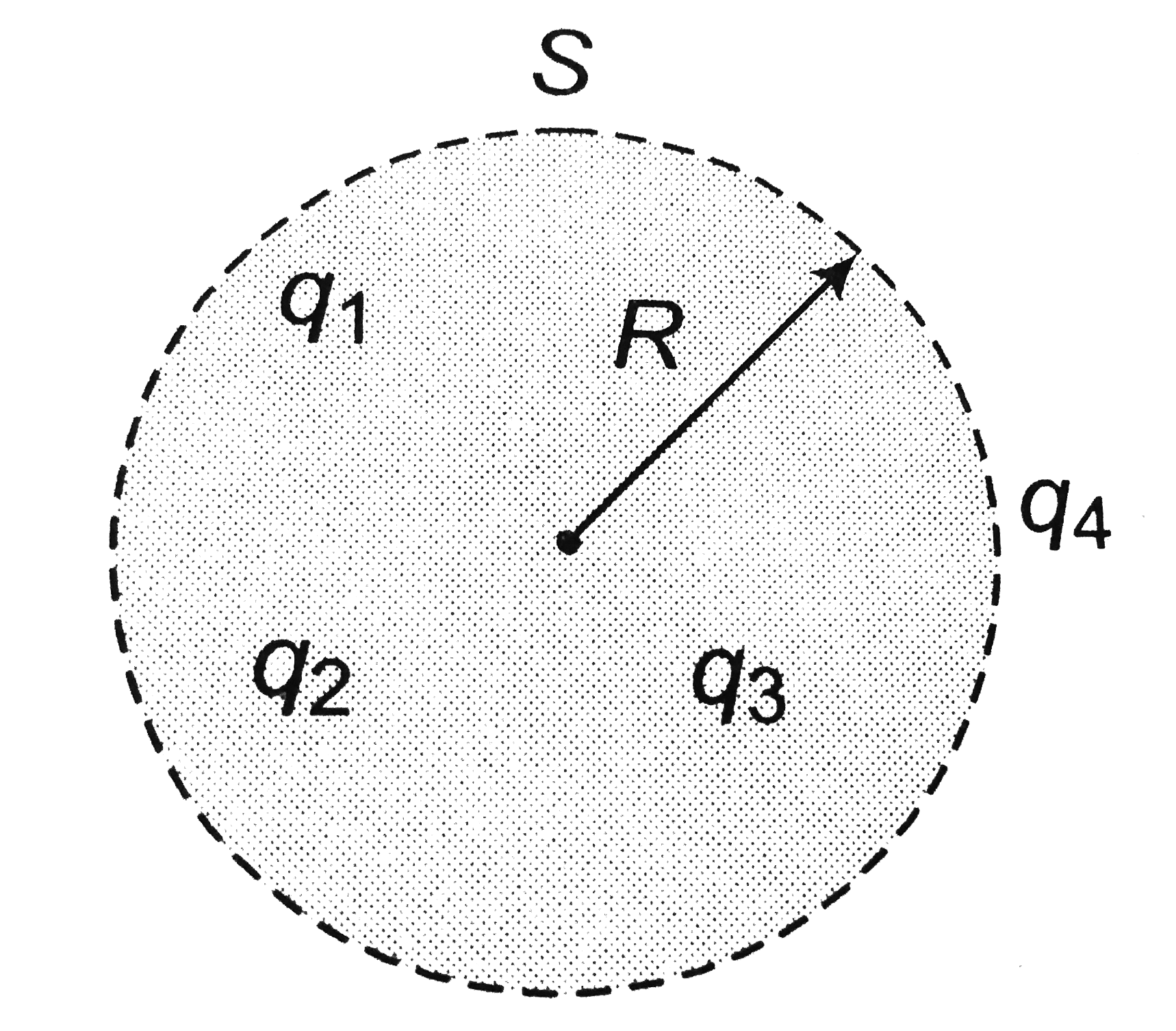 02:03View Solution
02:03View SolutionGauss’s law should be invalid if
03:03View SolutionThe inward and outward electric flux for a closed surface unit of `N-m^(2)//C` are respectively `8xx10^(3)` and `4xx10^(3)`. Then the total charge inside the surface is [where `epsilon_(0)=` permittivity constant]
01:52View SolutionIf a point charge q is placed at the centre of a cube, then find out flux through any one face of cube.
01:16View SolutionIf a spherical conductor comes out from the closed surface of the sphere then total flux emitted from the surface will be
01:23View SolutionIf the electric flux entering and leaving an enclosed surface respectively is `phi_1` and `phi_2`, the electric charge inside the surface will be
01:38View SolutionA charge `q` is located at the centre of a cube. The electric flux through any face is
02:47View SolutionShown below is a distribution of charges. The flux of electric field due to these charges through the surface `S` is
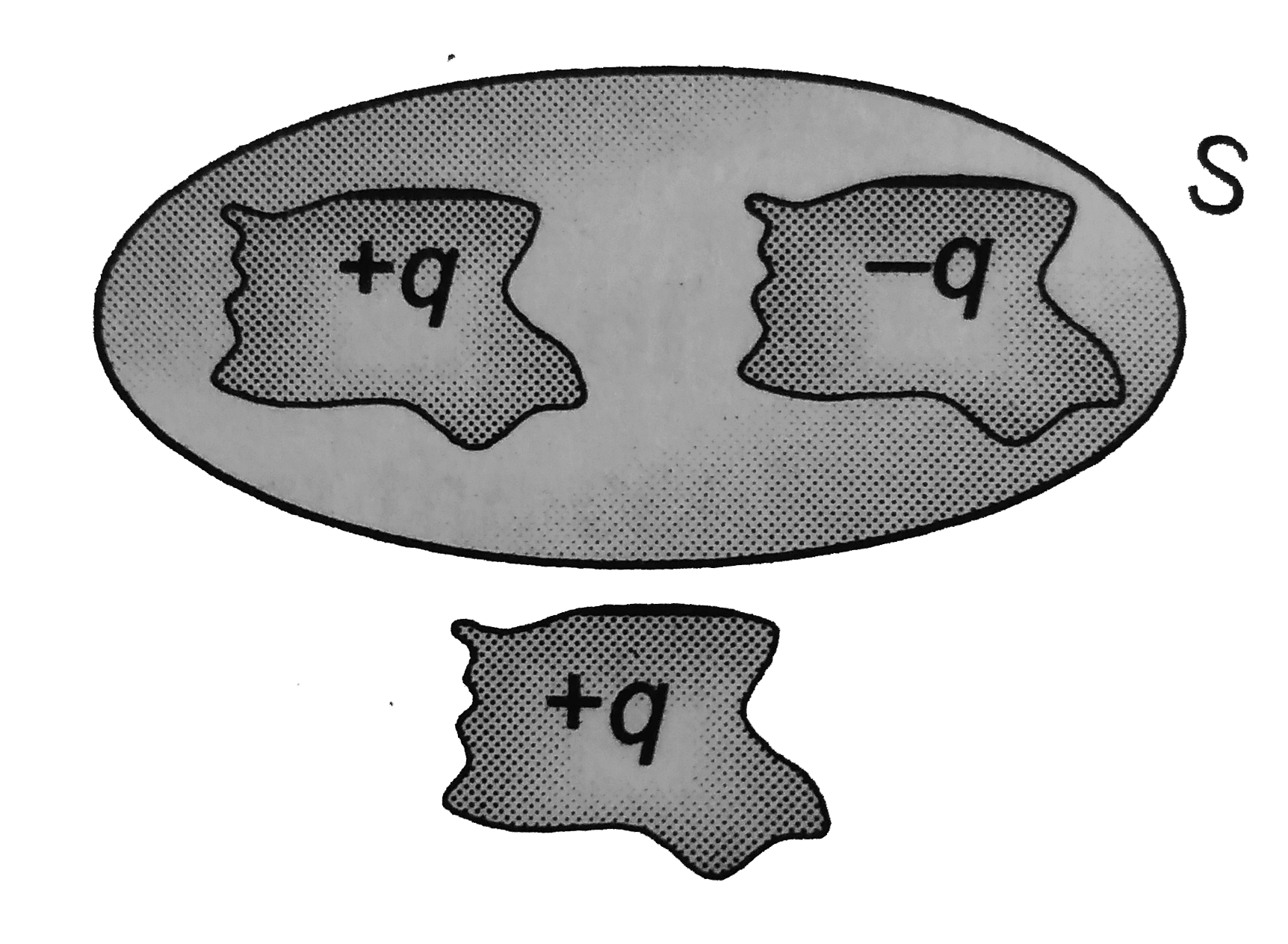 01:46View Solution
01:46View SolutionConsider the charge configuration and a spherical Gaussian surface as shown in the figure. When calculating the flux of the electric field over the spherical surface, the electric field will be due to.
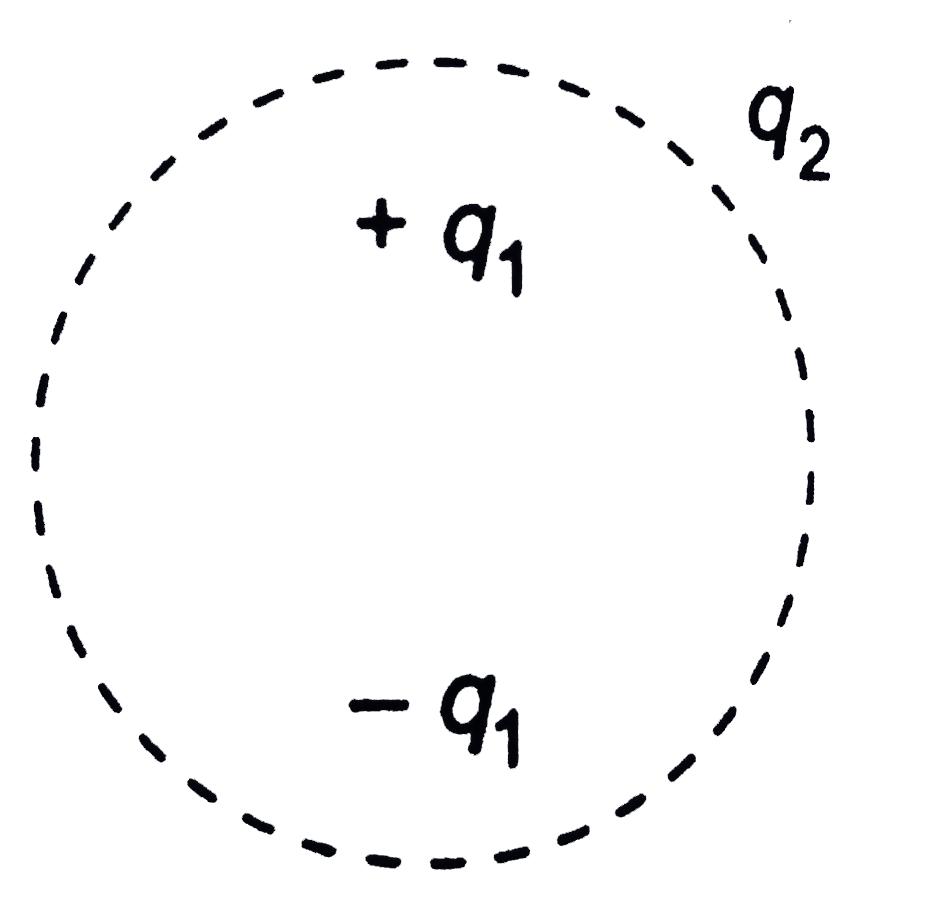 01:59View Solution
01:59View SolutionGauss's law is true only if force due to a charge varies as
01:35View SolutionAn electric dipole is put in north-south direction in sphere filled with water. Which statement is correct
01:56View SolutionTwo infinite plane parallel sheets, separated by a distance d have equal and opposite uniform charge densities `sigma`. Electric field at a point between the sheets is
02:33View SolutionThe electric flux for Gaussian surface `A` that enclose the charge particles in free space is (given `q_(1)= -14nC,q_(2)= 78.85nC,q_(3)= -56nC)`
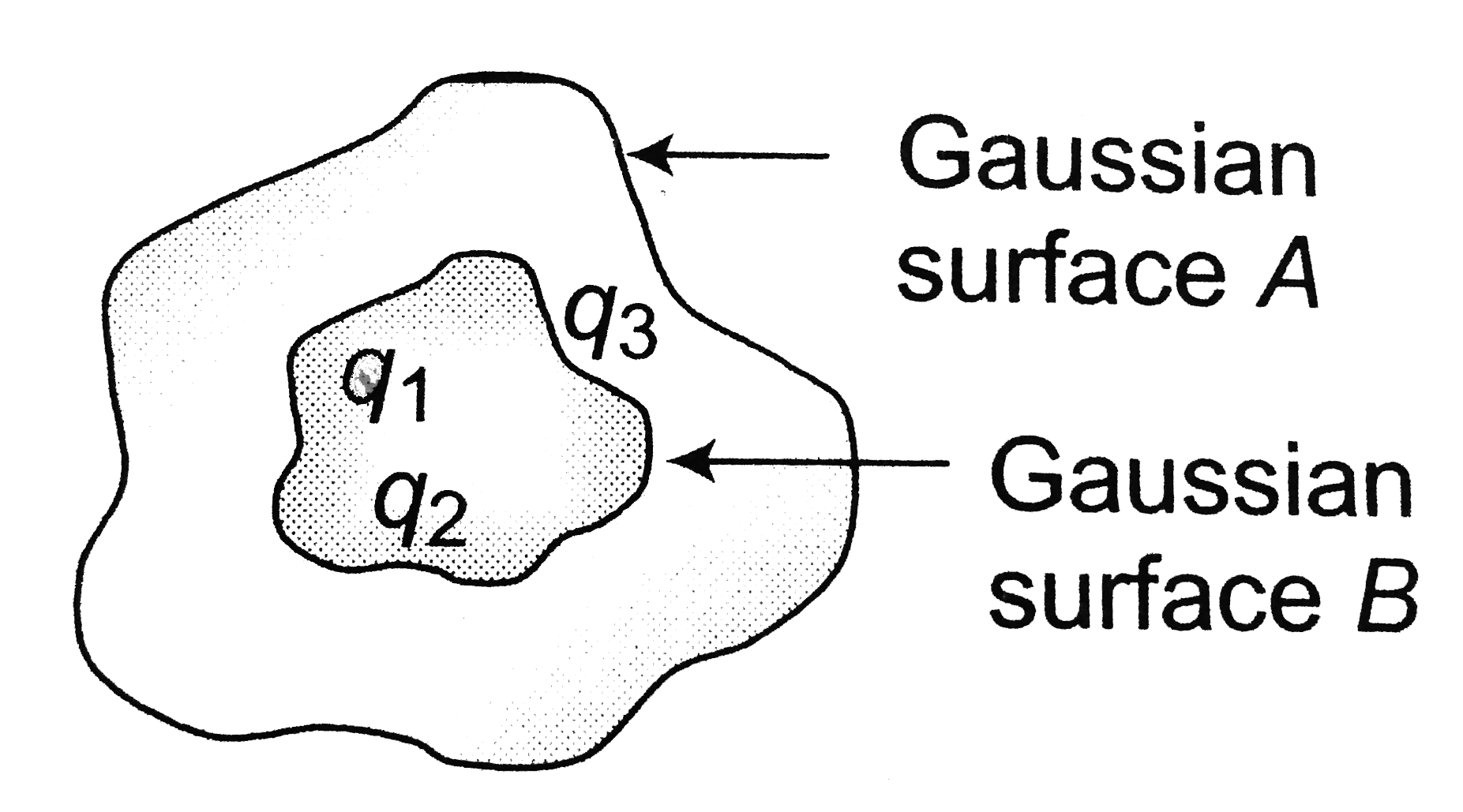 02:27View Solution
02:27View SolutionThe electric intensity due to a uniformly charged infinite cylinder of radius `R` , at a distance `r(gt R)` , from its axis is proportional to
03:49View SolutionA sphere of radius `R` has a uniform distribution of electric charge in its volume. At a distance `x` from its centre, for `x lt R`, the electric field is directly proportional to
05:23View Solution
Ordinary Thinking Objective Questions (Electric Flux and Gauss.s Law) questions and complete solutions for chapter ELECTROSTATICS of UNIVERSAL BOOK DEPOT 1960 PHYSICS (HINGLISH) of Class 12
